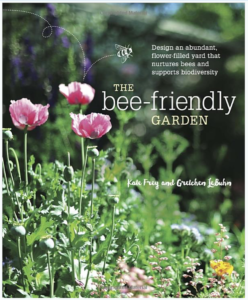Jacqueline Freeman's Blog, page 2
August 29, 2016
Buzzing bees visit studio for taste of honey
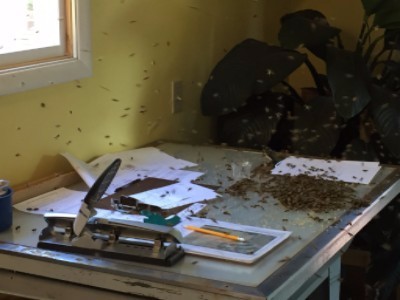 Buzzing bees are one of my favorite sounds in the world.
Buzzing bees are one of my favorite sounds in the world.
Last week Joseph and I were driving back to the farm from Portland. A gorgeous day. All I wanted to do when we got home was get out in the garden. But to earn a living, we need to spend at least a little time in the office. Joseph teaches Structural Integration for horses at our farm school and I teach and write about bees and farm life. We don’t have jobs outside of the farm. Our income depends on communicating with the world so people know about our mission. And that requires time in the office.
The conversation was mostly me musing aloud how to convince myself to spend a few hours in the office every summer day, to have the willpower to plunk my butt down in my office chair and get stuff done. Even as I said it, I recognized the conundrum. I need to work, yet I prefer to be outside playing with bees.
Most of the year I truly enjoy writing and speaking about bees and caring for the farm, but when it’s fabulously perfect weather and the sunflowers are covered with bees, it’s difficult to convince myself that sitting in front of this computer is more exciting than watching bees. If you are reading this, I’m sure you know what I mean. Bees are amazing and there’s no place I’d rather be than in their presence.
We pulled into the driveway and as I gathered up our packages, Joseph walked through the garage to the front door. He abruptly came back and said, “There’s something going on with your bees.”
Sure enough, the air around the patio and second story deck were full of bees. Almost like a swarm, but there was no central focus point, just thousands of bees in the air. For the moment I chalked that up to bees doing curious and inexplicable things, as bees are wont to do. I went inside, put my packages on the table, then went upstairs to my office. As I walked down the hallway, I heard the buzzing of bees.
Oh.
I stepped through the office door into a room filled with 10,000 bees. 10,000 buzzing bees were flying about my office, half in the air, half crawling on windows, walls, the desk. The sound (the sound!) of 10,000 bees humming filled every inch of air.
Still not understanding why they were there, I stood in the middle of the room for a full ten seconds delightedly wondering how? Why? What would make all these bees want to visit me? In my hive?
Curious event #1: Normally in summer I leave the windows open, but the house was being painted this week, so we’d removed all the screens.
Curious event #2: Last week I harvested a few honey combs that I’d placed on a table, waiting for me to take photos before I processed them.
Curious event #3: Explorer bees smelled the honey and flew in through the open windows to scour the comb,
That’s the logical explanation — bees smelled un-guarded honey and came through the window to harvest it. But a truer explanation is this: I said out loud I needed to find a way that would make me WANT to go into the office and stay there all day. Oh golly, the bees answered that in the best way ever!
I sat at my desk working, enveloped by the song of 10,000 bees. 10,001 of us got a lot done that afternoon.
How the buzzing bees got home
Most of the bees filled their bellies on honey and nectar and flew right back out one of the open windows and door, but I noticed many honey-filled bees crawling up and down the windows, frustrated by the glass. I caught one or two at a time with a cup and a post card and let them out the open door, but with hundreds left on the window, and more joining them every minute, I could see that wasn’t the best system. So I came up with a solution clever enough that I want to share it with you.
In case you don’t know this, bees orient to “home” with a tiny chip of magnetite in their brain. A bee flying home in the direction of a window can easily get stuck there. They absolutely KNOW that home is in that direction, so they try to fly through the window again and again. No go.
[From my book, Song of Increase:]
“Why do they get stuck? Because a honeybee cannot override her sense of direction. To guide her home, each bee has a tiny speck of magnetic oxide nanoparticles concentrated in her antennae and abdomen. When a bee flies up against that west-facing window, she knows absolutely that home is in that direction, if only she could get past the window. She will continue buzzing against the window until she exhausts herself and dies. You would imagine these bees would eventually figure out that they cannot get through the closed window, and then they’d go back out through the open door, but they don’t work that way. Curiously, other bugs nearly always find their way out quickly. Only the honeybees get caught there and die.”
I realized that there are actually two components to a bee getting stuck in a window: (1) The window is in the direction of the way home, and (2) that the path through the window looks transparent. All I needed to do was alter one of those situations.
 I had a roll of black paper in the studio, so I laid it across the window and taped it in place. In the time it took me to change the transparent window to opacity, 95% of the bees found their way out the door. If you ever find yourself trying to get a bunch of bees out of a room, block the windows and leave the door open. They’ll find their way.
I had a roll of black paper in the studio, so I laid it across the window and taped it in place. In the time it took me to change the transparent window to opacity, 95% of the bees found their way out the door. If you ever find yourself trying to get a bunch of bees out of a room, block the windows and leave the door open. They’ll find their way.
I took the remaining honey comb and placed that out on the deck. Within ten minutes nearly every bee had re-oriented and found the honey source outside the window. My deck had 9,900 buzzing bees on it while a hundred bees stayed behind to help me finish writing, and then they were on their way, too.
Since then, every day I walk into my office, a bee or two finds her way in. I sit and write while she checks out the area to see if any honey comb remains, or (as I like to think) if I need another moment of inspiration.
Click here to watch the video.
The post Buzzing bees visit studio for taste of honey appeared first on Spirit Bee.
July 18, 2016
Bee-centered beekeeping: When a hive grows slowly
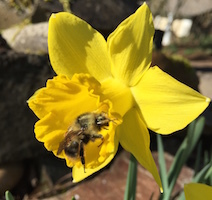 Bee-centered beekeeping takes a different approach than conventional beekeeping. The aim is to do things the way the bees themselves would do them.
Bee-centered beekeeping takes a different approach than conventional beekeeping. The aim is to do things the way the bees themselves would do them.
One of my top bar hives was going strong all spring and then a few weeks ago, their population started sliding. I generally don’t open my hives much, preferring to see what’s happening by watching behavior at the entrance and through the observation windows. But after a few weeks of slow decline, I wondered if they’d lost their queen, so today I opened the hive up.
Starting at the back, I slowly went one bar to the next, looking at honey production (moderate but steady), the cleanliness of the hive (one wax moth larvae fell out of a comb joint when I moved it and was immediately pounced upon by a maiden bee), and to see if there was any new activity in the brood chamber.
I rarely go in the brood chamber and when I did today, the maidens clustered over the brood cells to keep the larvae warm. I found plenty of brood of different ages including tiny floating cells with squirmy white larvae, which meant there is a Queen and she is laying.
On the next brood comb I saw the Queen busy laying eggs. She was downy with a fuzzy abdomen which told me she’s a young queen but I didn’t know how young. And then on the next frame I saw a single queen cell built right in the middle of the comb, the cell she was born in! This is a clear sign of the hive’s intelligence, they knew to replace an older weak queen with a strong new queen and they called her into being all on their own, without a human “replacing a queen.” (supercedure) This is bee-centered beekeeping in action!
To show the difference, here is what are commonly called “swarm cells,” a multitude of queen cells usually gathered along the bottom or sides of the combs.
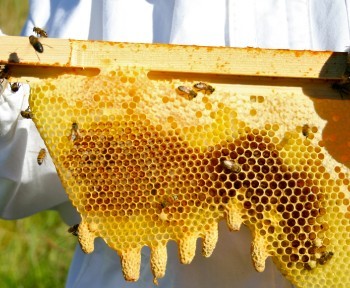
Bee-centered beekeeping: Bees create a supercedure cell
The bees created a supercedure cell, not a batch of swarm cells. Supercedure cells are usually singular, often in the center of a comb. The supercedure queen is created to replace a weak queen who is not laying with her same virility. She’s generally at the end of her time and even her royal queen scent — a powerfully important aspect of her presence in the hive — has begun to fade.
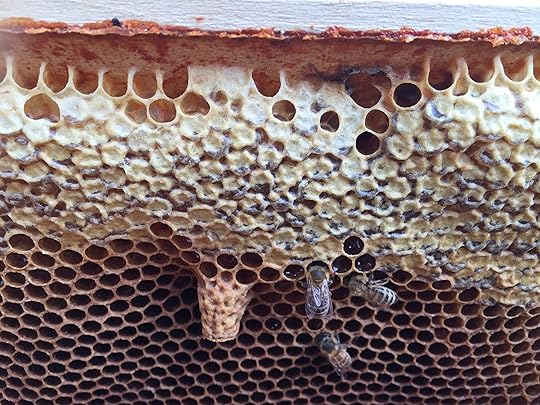
In swarming, part of the hive would leave with the old queen who is strong and ready to turn this swarm into a new settled colony. The colony in my hive, however, did not swarm; once the new “replacement” queen hatched, the colony stayed together and continued on with their new young queen. Unlike swarming, this situation is barely a blip in their behavior. The daughter-queen steps in as the mother-queen recedes.
In my experience, I have a few times found the old queen in the hive after being replaced, still being loosely cared for, but no longer celebrated as the queen. Supercedures are planned retirements.
Swarm cells are multiple queen eggs, created most often along the bottom and the edges. The two kinds of cells have a different purpose. Swarm cells are a response to the colony’s abundance. Supercedure cells are made to fix a problem, and to do that without drama.
This is why I don’t “buy queens.” A good hive knows when and how to replace a queen when they need to. This queen had hatched, mated, and was now doing her job. The slow-down I saw was the time it took for the new queen to birth, grow into sexual maturity, and take over the mother task. This is bee-centered beekeeping in action. Within the coming week I expect to see a quick upsurge in this hive’s population, and all will be well again.
This hive also had a brood gap which is a great way to get rid of mites. Let’s say the retired queen stopped laying (through death or being gently removed from her duties). There’s a good chance there next came a period of time when the new queen wasn’t prepared to lay yet. If that brood gap lasted a few short weeks until the last of the old queen’s brood hatched, that may have meant any pregnant mites in the colony couldn’t find bee larvae upon which to lay their eggs. This may even be one of the reasons the hive intelligence decided to replace their queen in the first place, as a method of mite reduction.
Had the beekeeper replaced that queen, the whole healing they designed would have been thwarted.
Lesson for Bee-Centered Beekeepers
A failing queen will be replaced by the colony if you let them do their job. When the average beekeeper sees a reduction in activity, the first thought in their head is to “replace the queen,” but replacing a queen means that colony will completely die out once the old queen’s children have died, and with them, all their knowledge of the local area.
Squishing an old queen and replacing her with a new queen should be an extreme rarity (I’ve never done it, nor have many of my learned bee friends). With so many people taking up queen-rearing these days, I suspect many of the times a queen is replaced is because they are so easily available. “I got stung — replace the queen!” “My bees aren’t building up fast enough — replace the queen!” “There’s not enough nectar coming in — replace the queen!” “It’s spring — time to replace the queen!”
I don’t believe this action is well thought out. We need to stop changing queens like we change our clothes. If there’s a slowdown in activity, there’s a good chance it’s perfectly natural and well-timed. This is at the heart of bee-centered beekeeping.
Replacing queens? I don’t follow that path. I prefer to let the bees do this themselves, which they will. To be a true adherent to bee-centric beekeeping, all the beekeeper has to do is wait and let the hive handle it by creating a new queen all on their own. A queen the colony cared for and nurtured and, from the moment she was born, who they love deeply. Long live the Queen!
The post Bee-centered beekeeping: When a hive grows slowly appeared first on Spirit Bee.
June 30, 2016
Song of Increase Book Update
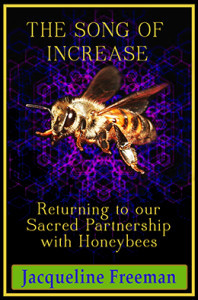 My new publisher, Sounds True, has done a tremendous job this past year getting my bee book, The Song of Increase, ready for the mass market. Have a look at their site, I’m in really good company.
My new publisher, Sounds True, has done a tremendous job this past year getting my bee book, The Song of Increase, ready for the mass market. Have a look at their site, I’m in really good company.
The new edition will come out at the end of summer, edited and truly better. It’s more well-organized and easier to read and will even cost less The cover is different, classier and with a beautiful gold embossed cover. They took it to the London Book Fair and have already received inquiries about translating it into 11 languages. I would never have had the knowledge about how to do that. It will come out in French first. Bon jour, mon amie! Publishing date is set for September 1, 2016. I’ll keep you posted.
If you can’t wait that long, I have a few copies left of the original version here and I’d like to move them along before the new version comes out. If you’d like a signed copy, email me $16 (I’ll cover postage) and where to mail it and those books will head right out the door.
The post Song of Increase Book Update appeared first on Spirit Bee.
June 28, 2016
2017 Bee Workshop Focuses On Life of Bees
UPDATE: Oh, dear. This workshop won’t be held this summer. Hope to do it later in the coming year. I’m leaving the description up so you’ll know what’s coming for 2017. — Jacqueline
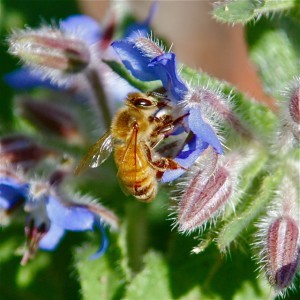 Our two-day Bee Workshop has Jacqueline teaching about communicating and working with bees. This work establishes a fundamental change in our relationship with the bee kingdom and thus all of Nature. This experience of the sacred nature of bees carries us into a holy relationship with Gaia.
Our two-day Bee Workshop has Jacqueline teaching about communicating and working with bees. This work establishes a fundamental change in our relationship with the bee kingdom and thus all of Nature. This experience of the sacred nature of bees carries us into a holy relationship with Gaia.
Why are we so fascinated with these little beings? For what reason are we called to know them in a deeper way? What secrets do they carry in their daily activities, relations with us and the earth? How do they wrap us into their environment? How does that affect us and our presence in the world? How do they work toward the mutual spiritual evolution of all beings?
Jacqueline shares how she communicates with bees and the way her book, “Song of Increase: Listening to the Wisdom of Honeybees for Kinder Beekeeping and a Better World,” came into being. We’ll work alongside the bees in ways that nurture their presence in the world and kindle goodness within our hearts, helping us understand how to provide them wonderful places in which to live and thrive.
Robin Wise shares her exquisitely gorgeous videos, photos and audios of bee songs that illuminate the beautiful wisdom of the bees. These expressions of insightful bee knowledge carry through the workshop to illuminate our personal experience and help us develop trust and connection that we can carry into our own future.
Our Whole & Holy Bee Workshop is not a “how to keep bees” workshop. Instead we work to understand their nature and work on the relational aspects of keeping bees. This calls our attention to subtleties that stretch us beyond our own boundaries and perceptions and bring joy to our connection with bees. You are invited to join us. Each person will receive a copy of the new revised book, pre-released for this conference. The purpose of the workshop is to interact with your bees (and all bees) from a place of receptivity, goodhearted intention, and informed right action.
Details: The class is two days long and will be held in 2017. For further info, contact
The post 2017 Bee Workshop Focuses On Life of Bees appeared first on Spirit Bee.
June 22, 2016
Do your bees have food and water?
I find it curious that so many people keep bees without paying attention to their need to eat and drink. Nobody would keep a horse or dog without having food and water on hand, yet many beekeepers plunk a box or two down in the backyard and let bees forage for themselves. Here on our farm I plant-plant-plant as much bloom as I can for each season.
Bees can forage up to a few miles away. When they leave our land, I fret about what they may be exposed to. I want enough CLEAN un-sprayed flowers that the bees will stick around and harvest from our blossoms.
 How has your weather been? I’m concerned about our strangely early spring that’s caused the flower cycle to come on way too fast. It’s early June and our apples are already 1/3 harvest size and yesterday I saw the first goldenrod in bloom, a flower that’s I shouldn’t see until September. That’s never happened before.
How has your weather been? I’m concerned about our strangely early spring that’s caused the flower cycle to come on way too fast. It’s early June and our apples are already 1/3 harvest size and yesterday I saw the first goldenrod in bloom, a flower that’s I shouldn’t see until September. That’s never happened before.
With everything coming in early, I worry what the bees will find later this summer. We have more acreage than most which gives me the liberty of planting “much and often.” Joseph and I planted an acre of sunflowers two weeks ago — flowers that will bloom toward the end of summer. If everything keeps blooming a few weeks early like it’s been doing here in the Pacific Northwest, what are they going to eat in August and September?
Sowing everywhere helps the bees even if you have a postage size lot in town. It all helps. There’s a fine book I recently read and recommend if you’re serious about planting for bees, “The Bee Friendly Garden: Design an Abundant, Flower-filled Yard that Nurtures Bees and Supports Biodiversity,” by Kate Frey and Gretchen LeBuhn. They’ve got wonderful advice for beekeepers in all kinds of climates, seasons, and conditions. (click the photo below for more info).
Bee Watering Stations
Today I’m focused on watering your bees. Why? If you don’t water them, your bees will find SOMEWHERE within flying distance to get water. If they find your neighbor’s swimming pool, you’ll soon have cranky anti-bee neighbors. Your bees may get into polluted or poisoned water after someone washes their car, drains antifreeze, or leaves tainted puddles around. It happens. If they can’t find water nearby, they will travel a long distance to a creek or pond, which gives you exhausted bees who spend too much time searching for water.
Last night I popped in on an internet gardening discussion. They were commiserating about honeybees AND OTHER PESTS in their ponds and birdbaths and (gasp!) sharing ways to kill the bees to keep them away. Please don’t let this happen to your bees.
It’s so easy to give them what they want and at the same time make your yard more beautiful. Here are some water stations we have around the farm and what it cost to make them functional.

Plain Old Birdbath
$20 at hardware store.
Really simple, I just added rocks, seashells and wood branches. Each morning I fill it.

Stock Tank
$60-100 at farm store
I added a $35 fountain so we don’t breed mosquitoes, and threw in some pond lilies and irises.

Concrete Pond
This old pond was here when we bought the farm. We’ve repaired it twice when the concrete cracked and I added plants and fountain.
Other Ideas
Bees prefer to keep their feet out of the water and like to stick their tongues in cracks to drink. That way they don’t risk falling in. In the concrete pond, the bees can stay a few inches from the pond edge where the water is drawn by capillary action up into the cracks. No need to get their feet wet.
 Here’s a really simple one. I just piled concrete pavers a few layers tall, laid down a sheet of pond liner large enough to overlap the edge to a depth of one row of bricks. Then we built the outside wall six inches higher than the inside level and pulled the liner over the first row of bricks Another course of pavers went on top of that so the liner doesn’t show, then I added water. I filled it with plants that like wet feet. Suggestions are mint, calla lilies, asparagus fern. (Pavers courtesy of craigslist for the rocking price of “you haul and they’re yours.”
Here’s a really simple one. I just piled concrete pavers a few layers tall, laid down a sheet of pond liner large enough to overlap the edge to a depth of one row of bricks. Then we built the outside wall six inches higher than the inside level and pulled the liner over the first row of bricks Another course of pavers went on top of that so the liner doesn’t show, then I added water. I filled it with plants that like wet feet. Suggestions are mint, calla lilies, asparagus fern. (Pavers courtesy of craigslist for the rocking price of “you haul and they’re yours.”
 This is part of a fountain I got at a yard sale for cheap. The fountain doesn’t work so I just keep the top part filled. I put an old piece of pink coral on top in the water and the bees really like it. Random seeds took up residence and are growing in there, too.
This is part of a fountain I got at a yard sale for cheap. The fountain doesn’t work so I just keep the top part filled. I put an old piece of pink coral on top in the water and the bees really like it. Random seeds took up residence and are growing in there, too.
For the Brave and Industrious
Now if you’re really industrious, you can do what Joseph and I are working on this week. A few years ago I paid $10 at a yard sale for a pre-formed pond liner. Our farm interns and I dug a hole and filled the new pond with water. From day one, the bees loved it. I didn’t prep the bottom right, however, so it eventually split. We decided to remove it and, hmm… yes, do it correctly this time.
We (Queen’s english, that actually means Joseph) dug a 10′ x 12′ hole, prepped the sides with shelves for plants, used flexible environmentally-slightly-better liner and collected rocks from our fields. It was a lot of work but, geez, it sure is pretty. Photo on the left is last week. Photo on the right was taken an hour ago. Yahoo!


The post Do your bees have food and water? appeared first on Spirit Bee.
May 19, 2016
Two Bee Swarms in 40 minutes!
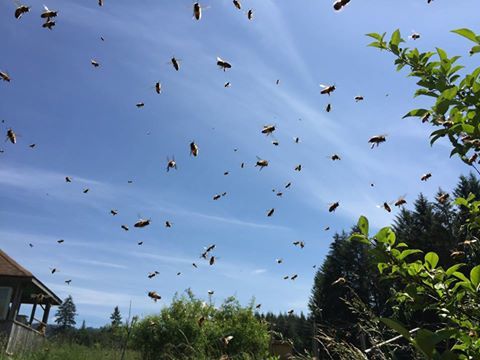 Bee swarms! Here’s what the sky looked like yesterday at our farm. I was working in the greenhouse and heard the swarm song. I dashed over just as they started to pour out of the most westerly hive in my bee house. Thousands of bees in the air and then the swarm SPLIT in two groups. Half the bees landed in the rose hips, the other half landed on a goumi bush about 20 feet further. We easily moved both bee swarms into two open top bar hives I had ready.
Bee swarms! Here’s what the sky looked like yesterday at our farm. I was working in the greenhouse and heard the swarm song. I dashed over just as they started to pour out of the most westerly hive in my bee house. Thousands of bees in the air and then the swarm SPLIT in two groups. Half the bees landed in the rose hips, the other half landed on a goumi bush about 20 feet further. We easily moved both bee swarms into two open top bar hives I had ready.
Moving the bee swarms
I dropped the rose bees into their new hive. 100 bees stayed outside on the hive roof, scenting the air to show everyone outside where the entrance was. I looked where they’d just been and saw 50 bees still on the branch.
I used a turkey feather to gently scoop them up and remove them from the branch, then I laid the feather on top next to the hive opening so they could walk in. The first two bees I moved this way, one was the Queen! Took her a half second to scoot inside and as soon as she did that, 95 bees tucked down their scent glands and rushed inside on her heels. Immediately the bees still on the branch climbed down. In a straight line, they went right in the opening, too. This hive really loves their Queen! We moved the hive up to the east pasture where we had a covered area ready.
Then we came back and scooped the second swarm into a hive. That Queen was first in a small cluster on a branch, and then her little group walked down the branch and joined the larger cluster to move into the hive. I watched every minute of this swarm, from them coming out of the old hive to putting each of them into their new hive. I hear beekeepers all the time saying only one queen at a time, but there it was, two queens left in the same swarm, split in the air, and became two complete colonies.
Two swarms in 40 minutes. I’m pretty sure that’s the fastest double swarm catching I’ve ever done!
The post Two Bee Swarms in 40 minutes! appeared first on Spirit Bee.
March 25, 2016
Spirit Bee April Events: Stories, Poems & Swarms
Spirit Bee April Events kick off Spring 2016 at Friendly Haven Rise Farm. We’re all abuzz with the change of season and these events just around the corner.
Spirit Bee April Events
Sign up today!
An Afternoon of Bee Stories and Farm Poetry
April 17 @ 2:00 pm – 4:00 pm
 Join writers Jacqueline and Susan for a delightful afternoon at Friendly Haven Rise Farm, Battleground, Washington.
Join writers Jacqueline and Susan for a delightful afternoon at Friendly Haven Rise Farm, Battleground, Washington.
Jacqueline speaks with passion about the deep love that permeates her life at the farm, where she raises bees, animals, gardens, and forest and field. Jacqueline is the author of “The Song of Increase: Returning to our Sacred Partnership with Honeybees.”
Susan writes engaging short stories about her experiences with all manner of wild and domesticated animals. She wrote the New York Times Bestseller, “Animals as Teachers and Healers,” and five more books about being in good relationships with nature.
Attendees who have written a story or poem on the topic will get five minutes to share.
Swarms with Jacqueline Freeman: Bringing Home the Bees
April 24 @ 10:00 am – 3:00 pm
Taught by Jacqueline Freeman at Friendly Haven Rise Farm, Battleground, Washington.
 This class is an absolute must-attend for true lovers of bees! Spend a fascinating day learning about the magic of the swarm, and how to catch a swarm easily and safely. We’ll put together a swarm kit, show you how to work with swarms in all kinds of situations, and you’ll learn about using bait hives, too. Join local swarm lists and bring home your own good strong local bees.
This class is an absolute must-attend for true lovers of bees! Spend a fascinating day learning about the magic of the swarm, and how to catch a swarm easily and safely. We’ll put together a swarm kit, show you how to work with swarms in all kinds of situations, and you’ll learn about using bait hives, too. Join local swarm lists and bring home your own good strong local bees.
This class will teach you new things about bee swarming behavior, and you’ll learn practices that go beyond so-called “conventional” beekeeping.
Sign up today. Bee classes fill up quickly!
$50 – Click here to register
The post Spirit Bee April Events: Stories, Poems & Swarms appeared first on Spirit Bee.
March 8, 2016
Bait Hives for Early Spring and Once-A-Year Food Summit

Here’s a little sweetie in our calla lilies last fall.
The warm weather is coming in fast. It’s the beginning of March and we already have plum, cherry, magnolia trees, daffodils, mustard, rosemary, violets and spirea in full bloom. I expect swarm season will be upon us ever-so-quickly!
I’m putting together our bait hives to invite those foot-loose and fancy-free colonies to come investigate our offerings. If you’ve got bait hives around, swarms may choose their new homes even before they pack their bags for the big trip. If you’ve got a bait hive hanging in a good location, there’s a good chance they’ll populate it all on their own.
I’ve used them with success the past few years. Once I get mine up in the trees, I’ll post photos of where ours are and why those are attractive locations for scouts to discover.
The Home Grown Food Summit
My friend Marjorie Wildcraft is a “force of nature.” She’s committed to educating people about how to be self-sufficient, to grow food and medicine on their own and be frugal and independent with every choice. She and I met last year and she asked me to become part of her mission. I love her drive and I’m keen on this attitude of self-sufficiency.
Marjorie brought together 38 experts in food production, homesteading and off-grid living. We each created a video on our specialty and, as you can guess, mine is how to care for bees in a considerate manner — not the short-sighted conventional methods so many good-hearted new beekeepers fall into when conventional is the only way their beekeeper group teaches. There ARE better ways to care for bees and that’s what I talk about in my bee video.
All 38 talks are fascinating. They air Monday, March 7th through the 13th. We are coming together to spread knowledge and build the resolve to move the American diet away from crappy food to food with more minerals, vitamins and flavor, off inefficient energy systems to true energy independence, and all by helping each other and working together. Reserve a spot and you’ll see all the presentations for no cost. After the 13th you can purchase the set but they’re no-cost until the 13th.
You’ll learn how to grow nutritious food, choose the right livestock, purchase property, grow potent herbal antibiotics. You’ll even learn to forecast the weather.
 You also get two e-books when you sign up:
You also get two e-books when you sign up:
“How To Make a Simple And Effective Watering System For Small Livestock”
“Top 10 Survival Plants: How To Grow Them and Collect Their Seeds”
Reserve your spot by clicking here You can see each of the topics, too.
Here is a sample of what you’ll learn:
How organic gardeners produce 2X to 10X greater yields
Guide to making $80 worth of compost per week
Legally keeping chickens and goats in the city
Natural beekeeping… how to do it WITHOUT chemicals!
Raise superior eggs, milk, and meat… in your backyard
How to get no cost access to local seed varieties
The BEST worms for backyard composting
Grow food — without owning land
24 herbals that treat colds, flu, allergies and infections
Protect yourself as a small-scale farmer from the 5 most common law suits
Understand Cottage Food Laws (CFLs) that regulate food production on your property
Our role in breaking the monopoly of big chemical and seed companies
Lessons to learn from World War I & II trends in food production
Raise goats for milk and meat… an introductory guide
How science supports backyard gardening as a cure for most major diseases
Create a garden biosphere
Rebalance your garden by using wildlife and insects
Recipes for herbal drinks you can make every day
Easy, brilliant secrets for composting in place
Save $100s making your own fish emulsion fertilizer
Spend $0 feeding your chickens
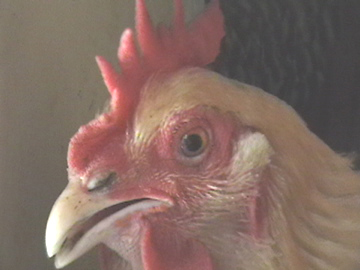
This is a once-a-year event. I hope you enjoy watching and learning. Click here to become a better partner with Nature.
The post Bait Hives for Early Spring and Once-A-Year Food Summit appeared first on Spirit Bee.
December 15, 2015
Bees in your pants? It could be worse!
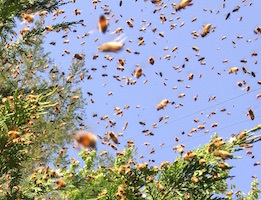 Bees in your pants? Trust me, it’s not that bad! Last spring a friend gave me a swarm she collected from her wild bee hive. It was nearly nightfall when the bees arrived and I know better than to try and move bees toward dark, but I hoped it would be simple and quick. I opened the box and saw thousands of crawling bees, so I tipped the box upside down and shook half the bees into the new hive. What I didn’t know is that the other half were clustered on a big branch that was wrapped in a pillowcase inside the container.
Bees in your pants? Trust me, it’s not that bad! Last spring a friend gave me a swarm she collected from her wild bee hive. It was nearly nightfall when the bees arrived and I know better than to try and move bees toward dark, but I hoped it would be simple and quick. I opened the box and saw thousands of crawling bees, so I tipped the box upside down and shook half the bees into the new hive. What I didn’t know is that the other half were clustered on a big branch that was wrapped in a pillowcase inside the container.
Once the surface bees were moved, I saw the bees beneath were tangled in cloth and branches. Oh dear. I hadn’t realized the complications of the move and now, with half the bees inside the hive and the other half entangled, I couldn’t turn back. In the dark I tried to shake out the pillowcase but it had thousands of nervous bees both inside and outside it. The scared branch bees didn’t want to release their hold either because they were afraid of falling away from the hive which surely would mean they’d die alone.
It took a good while and eventually nearly all the bees were inside the hive, but in all the branch and cloth shaking, a good number of bees had fallen onto the floor of the bee house. Bees don’t like being down on the ground and as I did my work above, every little lost bee on the floor moved toward the only tall thing they could find, my pants legs. They climbed over my sneakers, up my socks, and underneath my jeans.
Don’t panic with bees in your pants. Talk to them.
I felt the tickle as each one climbed my legs all the way to the top of my knees, as far as my jeans let them go. Being in the midst of the transfer, I told these little bees not to be afraid, to find a safe place, hold still and wait for me. I would tend to them as soon as I finished.
A half hour later I had most everyone safely inside the hive, out of the container, off the branches and unstuck from the folds of the pillowcase. I tucked the new hive in and told the lost-in-my-knickers bees we were going to wend our way down to the house where I had light and could safely find them all. I walked across the field down to the house, slowly so my jeans didn’t bind anyone. Once in the bathroom, I closed the door to keep us all in one place. Then I rolled down my jeans at about ice-melting speed, finding and carefully lifting off each bee as I found her on my thighs, shins and socks.
All in all, I released fourteen bees from inside of my pants. I am so proud of these little bees because they went through an adventure that could have been traumatic and not a one of them got upset. Fourteen bees. No stings. Bless the sweet trusting goodness of each one.

Jacqueline Freeman & her bees — and everyone’s smiling. She and her well-loved bees live in southwest Washington. Find her bee book, “The Song of Increase: Returning to our Sacred Partnership with Honeybees” at www.SpiritBee.com .
The post Bees in your pants? It could be worse! appeared first on Spirit Bee.

